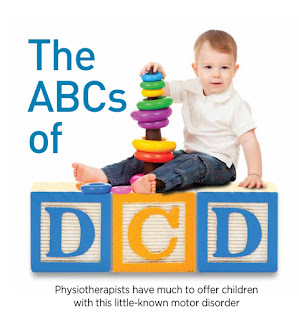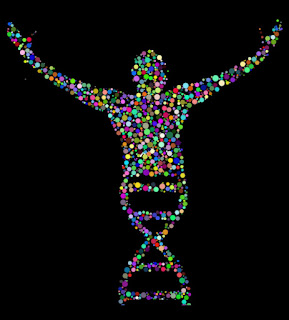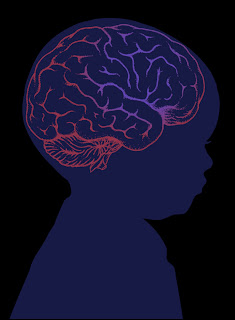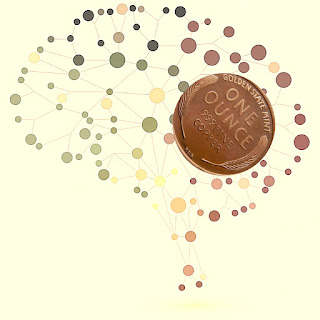" A TWISTED FATE'' - DYSTONIA THE NEW TONE !!!!! - BY DR. VANDANA PATEL (PT)
Dystonia
is a disorder dominated by sustained muscle contractions, which often cause
twisting and repetitive movements or abnormal postures.
It is a
persistent attitude or posture in one or the other of the extremes of athetoid
movement, which is produced by co-contraction of agonist and antagonist muscles
that place the limb in an unnatural position.
Dystonia
can vary considerably in severity and may show striking fluctuations in
individual patients. In its early stages it may be interpreted as an annoying
mannerism or hysteria, and only later in the face of persisting postural
abnormality, lack of the usual psychologic features of hysteria and the
emerging character of illness makes it obvious as dystonia.
Dystonia
may be limited to facial, cervical or trunk muscles or to those of one limb and
it may cease when the body is in repose. Severe instances result in grotesque
and distorted positions of the body; sometimes the whole musculature seems to
be thrown into spasm by an effort to move an arm or to speak.
The
movements of dystonia tend to be slower than the rapid muscle jerks present in
tic disorders. Dystonia characteristically exhibits a patterned movement with
consistent posturing, unlike chorea, which produces rapid, unpredictable
movement.
NEURO-PATHOLOGY:
Focal
brain lesions which produce dystonia are most commonly located in basal ganglia
and thalamic target of the basal ganglia.
The
basal ganglia include the striatum (caudate, putamen, nucleus accumbens), the
sub thalamic nucleus (STN), the globus pallidus [internal segment, external
segment, ventral pallidum(VP)]. And substantia nigra (pars compacta and pars
reticulata).
Two
primary pathways through basal ganglia from cerebral cortex are involved with
the functions of Basal Ganglia.
Direct
Pathway: Through striatum
Hyper-direct
Pathway: Sub thalamic nuclei to Basal Ganglia output.
PHYSIOLOGY
OF PRIMARY DYSTONIA:
- Loss of inhibition at many levels of neuraxis
- Agonist- antagonist contraction at the same time
- Reciprocal inhibition
- Surround inhibition
- Abnormal plasticity of the nervous system
SECONDARY
DYSTONIA OR DYSTONIA PLUS SYNDROME can be because of the damage to the indirect
pathways, caudate nucleus and putamen.
CLASSIFICATION OF DYSTONIA:
Primary dystonia:
-Dystonia
is the only sign without associated neurological findings.
1. Based on distribution
|
Classification |
Areas of involvement |
Examples |
|
Focal |
A
single body area |
Eye
closure (blepharospasm), Neck-muscles(cervical
dystonia), writer’s
cramp(limb dystonia), vocal-cords(spasmodic
dysphonia). |
|
Segmental |
Two
contiguous body regions |
Blepharospasm
and lower face or jaw (Meige syndrome) Cervical
dystonia and writer’s cramp |
|
Generalised / both legs and trunk |
One
leg , trunk and one other body region |
Childhood
onset with spread |
|
Multifocal |
Two
non-contiguous body regions |
Blepharospasm
and foot dystonia |
|
Hemi -dystonia |
Body
regions on one side |
Arm
and leg on one side of the body |

2. Genetic:
-DYT1: Onset typically in childhood with
spread to become generalized dystonia. Gene isolated. Clinical testing is
available.
-DYT2, 4, 7, 11, 13: No clinical testing
available.
3. Sporadic:
-No
family history.
-Most
adult-onset dystonia. Some may have genetic basis.
4. Based on age of onset
|
Classification |
Age |
|
Childhood onset |
Onset
of symptoms at age <21 |
|
Adult onset |
Onset
of symptoms at age >21 |
Secondary dystonia:
Associated
with other hereditary neurologic syndromes.
1. Dystonia Plus Dopa-responsive dystonia
2. Other inherited (degenerative) disorders
-
Autosomal-dominant
-
Rapid-onset dystonia-parkinsonism
-
Huntington's disease
-
Machado-Joseph's disease/SCA3 disease &
Other SCA subtypes (SCA- spino cerebellar ataxia)
-
Familial basal ganglia calcifications
-
Autosomal-recessive
- Wilson's disease
3. Due to acquired/exogenous causes
-
Perinatal cerebral injury
-
Encephalitis, infectious, and postinfectious
-
Head trauma
-
Pontine myelinolysis
-
Primary antiphospholipid syndrome
-
Stroke
-
Tumor
-
Multiple sclerosis
-
Cervical cord injury or lesion
-
Peripheral injury
-
Drugs
-
Toxins
- Psychogenic
4.
Dystonia due to degenerative parkinsonian
disorders
-
Parkinson Disease
-
Multiple system atrophy
-
Progressive supranuclear palsy
-
Cortico basal ganglionic degeneration
Other types:
·
X-Linked Dystonia-Parkinsonism (DYT3; Lubag's
Syndrome)
·
Dopa-Responsive Dystonia (DYT5)
·
Rapid-Onset Dystonia Parkinsonism (DYT12)
·
Paroxysmal Kinesigenic Dyskinesia (DYT10)
·
Paroxysmal Dystonia/ Dyskinesia (DYT8)
·
DYT 2 & DYT 4
·
Myoclonus Dystonia (DYT11& DYT15)
·
Post-Traumatic Dystonia
·
Familial Paroxysmal Dyskinesia (DYT9)
·
Adolescent onset with mixed phenotype (DYT6)
·
Multifocal/Segmental Dystonia (DYT13)
·
Tardive Dystonia
PHYSICAL THERAPY TREATMENT STRATEGIES FOR DYSTONIA:
There have been an increased
number of publications showing that physical therapy and rehabilitation
procedures have an important role in the care of patients with dystonia.
For writer’s cramp:
- Trans-cutaneous Electrical
Nerve stimulation caused a significant beneficial
effect when given on forearm flexor muscles in one randomized, double
blind placebo controlled cross over study. Ten sessions of 15 minutes in 2
weeks were able to improve some objective and subjective aspects of
writing performance, although no change was seen on writing disability
score.
- Ranawaya
et al. used a tripod writing device
leads to subjective improvement of dystonic symptoms in 75% of patients
and of legibility in 25%. However, 50% of the patients didn’t consider the
writing aid to be useful.
- Schenk et al. used individually tailored writing exercises and techniques to produce more comfortable and legible handwriting such as scribbling letters, small words to improve wrist finger coordination and movement fluency techniques were given for once weekly session for 4 months which showed improvement in patients with writer’s cramp.
- EMG Biofeedback
has also been studied in Writer’s cramp and was found to be effective in
majority of studies.
- One study in 10 patients used auditory EMG feedback on large proximal muscles of the dystonic arm and showed a sustained improvement after 6 months with a decrease in pain and discomfort and increase in legibility of hand writing.
- Motor Retraining therapies
in one study of 10 patients in which motor exercises of one finger was
given while the other four were immobilized by a splint for a period of
4-12 weeks which showed highly variable subjective improvement assessed by
a self rating scale was observed in 6 of 10 patients.
- More recent studies have tried to focus on patho-physiological concept in writer’s cramp; which suggest that it results from sensory dysfunction which leads to erroneous sensory motor integration and inadequate motor planning. Sensory discrimination is found to be effective in this kind of presentation of dystonia.
Other
treatment strategies:
- Well
fitted braces are designed primarily to improve posture and to prevent
contractures.
- A
variation of immobilization therapy, Constrained
Induced Movement Therapy has been used successfully in rehabilitation
of dystonia but conflicts still exist. Five
professional musicians (three pianists and two guitarists) with
long-standing symptoms were studied; they had previously received several
treatments without success. The current therapy involved immobilisation by
splint of one or more of the digits other than the focal dystonic finger.
The focal dystonic finger was required to carry out repetitive exercises
in coordination with one or more of the other digits for 1·5–2·5 h daily
(depending on patient fatigue) over a period of 8 consecutive days under
therapist supervision. The patients subsequently continued practising the
exercises with the splint for 1 h a day at home in combination with
progressively longer periods of repertoire practice without the splint.
Patient status was quantified with two measurement instruments: a
dexterity/displacement device which continuously recorded digital displacement
during metronome-paced movements of two fingers (spectral analysis of the
records provided information concerning the smoothness of the movements
before, during, and after training); and a dystonia evaluation scale (DES)
in which the patients rated how well they were performing (without the
splint) movement sequences and passages from their repertoire that had
tended to generate dystonic movements in the past. All patients showed
improvement without the splint at the end of treatment.
- Repetitive
Trans-cranial Magnetic Stimulation delivered at low frequency (≤ 1 Hz) for
20 minutes is found to be effective.
- Positioning
of part of limb in less stressed position.
- Passive
Myo-fascial Elongation manoeuvres.
- Stretching
and strengthening exercises.
- Deep massage in case of cervical dystonia especially has shown positive results.
8.
Combined rehabilitation program in addition to Botulinum toxin injections has
recently been demonstrated in a cross over study of 40 cervical dystonia
patients. The rehabilitation program consisted of daily sessions of physical
therapy such as passive myofascial elongation maneuvers, deep massage of
cervical muscles, stretching to increase range of motion, and strengthening
exercises with biofeedback for 60 to 90 minutes during 2 weeks, following
BoNT-A injections. The patients were crossed over after a period of 45 to 120
days depending on the subjective clinical benefits and the EMG activity in
comparison to baseline. Analysis showed that the BoNT-A plus rehabilitation
program group had a longer duration of the clinical BoNT-A effect and that they
needed a lower dose of BoNT-A at reinjection. In addition, they showed more
marked reductions in their disability in daily activities and subjective pain
scores.
9. Leplow demonstrated the positive effect of acoustic biofeed back as part of an extensive behavioural training program aimed at reducing pathological activity in hypertrophied sternocleidomastoid muscle over non feedback in a within patient design and the improvement persisted during the session.
Stress Management
Elements of stress management may be incorporated into a physical therapy program and relaxation exercises may be tailored to address specific motor problems.
Relaxation techniques may vary from deep breathing, visualization, and progressive muscle relaxation to local and generalized stretching. Stress management may also mean taking more time for leisurely activities. Yoga or a soft martial art such as Tai Chi may increase fitness and relaxation simultaneously. Meditation can create a mental refuge from stress and aggravation.

💬💬💬💬
REFERENCES:
1. Hand
book of dystonia - By Mark A. Stacy.
2. Clinical
diagnosis and management of Dystonia- By Thomas T warner & Susan B
Bressman.
3. Bradley's
neurology in clinical practice. – By Daroff, R. B., & Bradley, W. G. (2012), Philadelphia, PA:
Elsevier/Saunders.
4. Clinical
Neurology by world federation of neurology on Dystonia.
5.
Jabusch H, Zschucke D, Schmidt A, Schuele S,
Altenmüller E. Focal dystonia in musicians: Treatment strategies and long-term
outcome in 144 patients. Movement Disorders. 2005;20(12):1623-1626.
6.
Delnooz C, Horstink M, Tijssen M, van de
Warrenburg B. Paramedical treatment in primary dystonia: A systematic review.
Movement Disorders. 2009;24(15):2187-2198.
7.
Candia V, Schäfer T, Taub E, Rau H,
Altenmüller E, Rockstroh B et al. Sensory motor retuning: A behavioral
treatment for focal hand dystonia of pianists and guitarists. Archives of
Physical Medicine and Rehabilitation. 2002;83(10):1342-1348.
8.
Priori A, Pesenti A, Cappellari A, Scarlato
G, Barbieri S. Limb immobilization for the treatment of focal occupational
dystonia. Neurology. 2001;57(3):405-409.
9. Schenk
T, Bauer B, Steidle B, Marquardt C. Does training improve writer’s cramp? An
evaluation of a behavioral treatment approach using kinematic analysis. J Hand
Ther 2004;17:349– 363.
10. Leplow
B. Heterogeneity of biofeedback training effects in spasmodic torticollis: a
single-case approach. Behav Res Ther 1990;28:359–365.
11. Ranawaya
R, Lang A. Usefulness of a writing device in writer’s cramp. Neurology
1991;41:1136–1138.
12. Baur B, Schenk T, Furholzer W, et al. Modified
pen grip in the treatment of Writer’s Cramp. Hum Mov Sci 2006;25:464–473.
13. Deepak
K, Behari M. Specific muscle EMG biofeedback for hand dystonia. Appl
Psychophysiol Biofeedback 1999;24:267– 280.
14. Tinazzi
M, Farina S, Bhatia K, et al. TENS for the treatment of writer’s cramp
dystonia: a randomized, placebo-controlled study. Neurology 2005;64:1946–1948.
15. Candia
V, Schafer T, Taub E, et al. Sensory motor retuning: a behavioral treatment for
focal hand dystonia of pianists and guitarists. Arch Phys Med Rehabil
2002;83:1342–1348.













Just wow, !!!
ReplyDeleteIt was great mam, thankyou for the knowledge shared.
ReplyDeleteKnowledgeable 👌
ReplyDelete